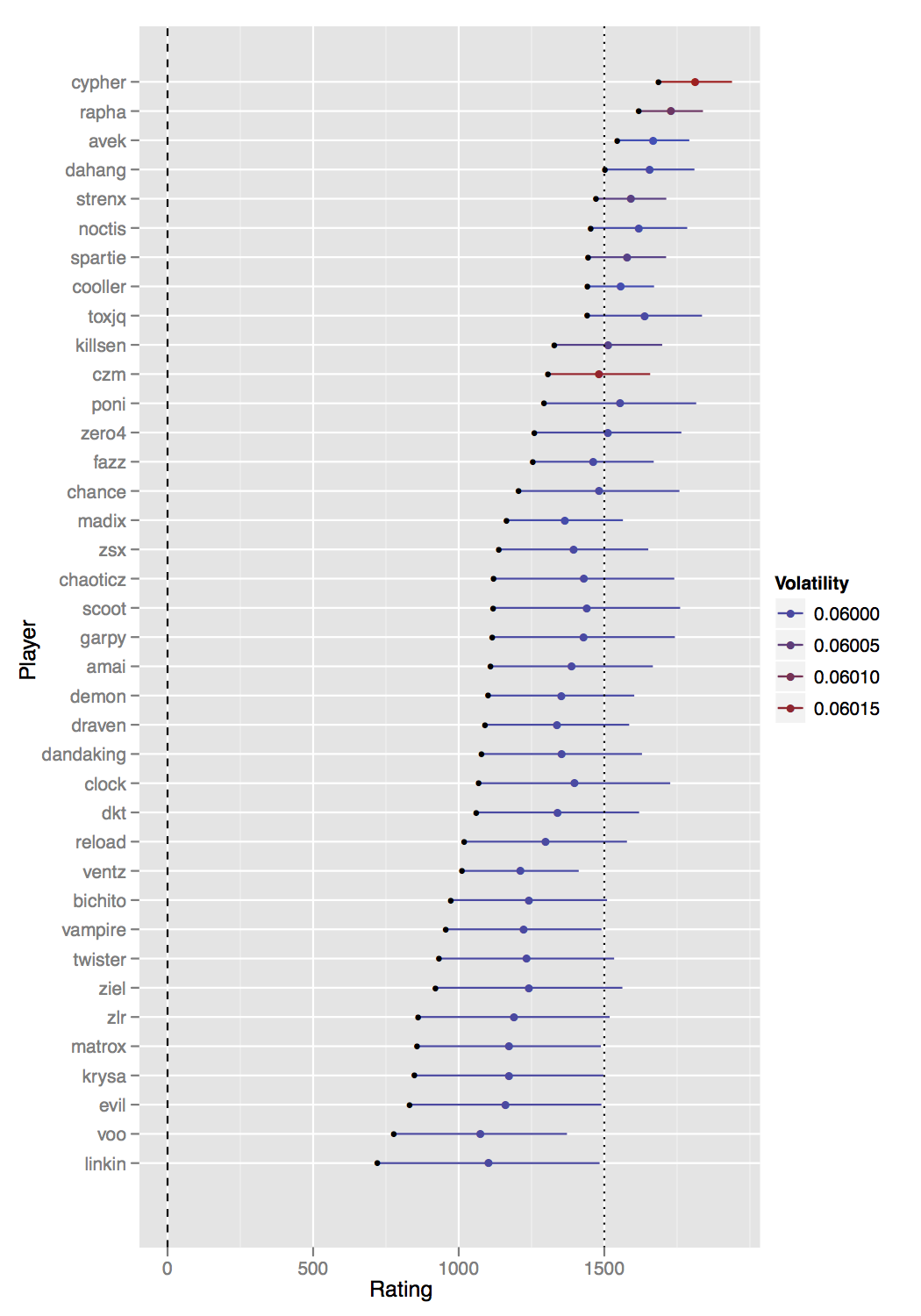Unlike ELO, G2 is much more advanced. First of all, we are not reporting a single value as the rating of a player. Rather, we are reporting an interval in which we have 95% confidence.
As a conservative estimate, we use the lowest point (marked as a black dot) as the current skill of the player. This penalizes players that are not playing. Also, the color chosen reflects a third value, namely how "volatile" the players rating is.
In Glicko 2, we have three numbers for each player: Rating - R, Variance - RD, and Volatility - V. The rating works much like in ELO. The higher the number, the better you are. But unlike ELO we also associate a variance with each rating, RD. As you play games your variance will shrink down. This means you will move around less once you play enough games. If you don't play for a period, your variance is increased. This reflects the systems confidence in your current skill rating.
Finally, we have the volatility, which reflects how erratic the players performance is. If you suddenly win lots of matches after a period of stability (or likewise lose them), the volatility will be high. Do note that all these players have fairly low volatility - it is just the measurement gradient scale that makes it seem exaggerated.

Edited by Nukm at 15:33 CST, 24 January 2012 - 27342 Hits

